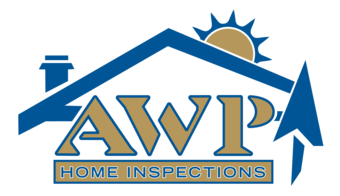Weatherproofing Your Home: Simple Fixes for Drafty Leaks and a More Comfortable Living Space
As seasons change, keeping your home comfortable and energy-efficient becomes a priority. A crucial step in achieving this is weatherproofing your home to prevent drafts and air leaks. This not only ensures a cozy indoor environment but also translates to significant energy cost savings and a reduced carbon footprint.
This blog will explore various simple fixes for those pesky drafts and air leaks, ultimately helping you create a more comfortable and sustainable living space.
Identify the Draft Culprits
The first step is to identify the sneaky sources of drafts and air leaks in your home. Here are some common culprits to keep an eye on:
- Windows and doors
- Attic hatches
- Electrical outlets and switches
- Plumbing penetrations (areas where pipes enter or exit your home’s exterior walls)
- Gaps around pipes and vents
Carefully inspect these areas for signs of drafts. Feel for cool breezes or notice light filtering around door frames.
Seal Up Windows and Doors
Windows and doors that aren’t properly sealed are notorious for allowing drafts to enter your home. Here’s how to tackle them:
- Install weatherstripping: This fills gaps around window and door frames, effectively sealing them and preventing air leakage.
- Caulk or seal window cracks: Use caulk or sealant to address any window cracks or gaps you discover.
- Storm windows or doors: Consider installing storm windows or doors for extra insulation and draft reduction.
Boost Insulation in Attic and Walls
Poor insulation in your attic and walls can lead to significant energy loss and drafts. Addressing these areas can make a big difference:
- Add insulation: Adding insulation materials like fiberglass, cellulose, or spray foam to your attic and walls helps maintain a consistent indoor temperature and reduces strain on your heating and cooling systems.
Seal Leaky Ductwork
Leaky ductwork can be a hidden culprit, allowing heated or cooled air to escape into unconditioned spaces, wasting energy and driving up utility bills. Here’s how to address it:
- Inspect and seal leaks: Look for any signs of leaks or gaps in your ductwork and use duct sealant or metal tape to seal them properly.
- Consider duct insulation: For further efficiency improvement, consider insulating ducts located in unconditioned areas like the attic or basement.
Plug Electrical Outlets and Gaps
Don’t underestimate the impact of small leaks! Here’s how to address them:
- Electrical outlets: Install foam gaskets behind outlet covers to create a tighter seal and prevent air leakage.
- Gaps around pipes and vents: Use expanding foam or caulk to seal gaps around pipes, vents, and other penetrations in your exterior walls.
Consider a Professional Energy Audit
If you’re unsure where drafts are originating or feel overwhelmed by the process, consider hiring a professional energy auditor. An energy audit offers a comprehensive assessment of your home’s energy efficiency, pinpointing problem areas and recommending solutions tailored to your specific needs and budget.
Weatherproofing Pays Off
Taking proactive steps to weatherproof your home isn’t just about comfort; it’s an investment in your wallet and the environment. By identifying and addressing drafts and air leaks, you can create a more comfortable and energy-efficient living space year-round. Whether it’s sealing windows and doors, adding insulation, or plugging electrical outlets, these simple fixes will not only save you money but also contribute to a greener future.
AWP Home Inspections offers professional home inspection services in West Central and Central Indiana. Our team is dedicated to providing information so you can feel confident about your property’s condition. Contact us to request an appointment.

